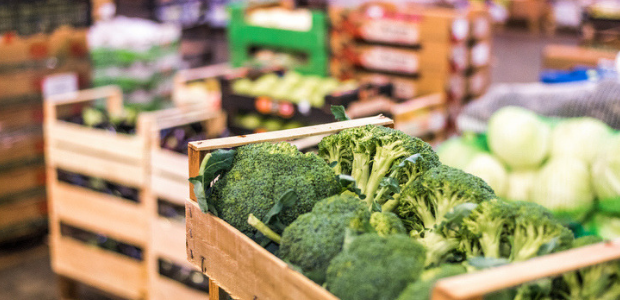ALSO READ: Shopping smart: 6 Foods you should never buy in bulk
The Cape Town Market in Epping is the most important link in the food chain of the Western Cape, helping farmers to get their produce to market. On the 30 ha trading floor is where producers, farmers, retailers and merchants meet to do business, 24 hours a day, 7 days a week. That’s over 5000 farmers and producers trading in a space bigger than the size of 7 rugby fields!
Adrian de Villiers and Omar Allie, part of the Market Management Team, spoke with us about the mission of the market. “Our commitment is to our principal clients, the producers (farmers) who supply their fresh produce to the Cape Town Market. Our produce buyers are equally important and range from large retail chains, wholesalers and food processors, to informal traders, hawkers and individuals.”
“We are building a low cost distribution system that always protects the interests of our producers, while supporting the communities of Cape Town that rely on us” said Adrian.
In the market, almost anything that comes from a plant or tree is for sale. The majority of produce traded at the market consists of potatoes – the lifeblood of many Cape communities. You could say that almost every chip roll and gatsby originates right here, under the roof of the market. “Over three quarters of all sales here are potatoes. It’s a staple crop for the people of the Western Cape”, Omar told us.
There are many peripheral businesses that operate alongside the Market, including an onsite Department of Health office, major retailer distribution centres and the People’s Market – a smaller, direct to the public fruit and veg market.
Health and Safety is of the utmost importance at the Market, explains Safety Manager Garth Lucas. A strict record is kept of every crate and sack that enters and leaves the market. The floor is spotless, with barely a cabbage leaf out of place while security and porters keep the produce moving along with a smart efficiency.
The market is open to any member of the public. Simply bring your ID with to register on the cashless card-based sales system and then get shopping! Of course, the only thing that may be a challenge is that the smallest unit size can sometimes be quite large for the average family home. A unit of cabbages is 10 heads, while a unit of avocados is a box (which isn’t too much of a challenge for the average avo-lover!). If you’re after a smaller quantity, best to visit the People’s Market outside.
Food that is not fit for sale is removed from the trading floor, and processed before being distributed to 40 000 needy households through the “Food on the Table” initiative. Any items removed from the floor are inspected by a representative from the Department of Health, and then cleaned, sorted and distributed to hungry families and community kitchens. This system has helped the market keep food waste down to about 0,1% of all produce, which is an amazing accomplishment.
Operating on a 50 year old site can be challenging, but the management team is working hard on making improvements. The facility is constantly being upgraded to become more energy, heating and water efficient. Adapting and growing the market as the city expands is one of the Markets missions, and is sure to continue feeding Capetonians for many decades to come.
This story forms part of the Food Journeys series by Katy Rose. It takes a closer look at the food South Africans buy, cook and eat on a daily basis and documents the stories of the people who help to get it to us.
ALSO WATCH: The world’s oldest restaurant is still using an oven dating back to 1725

